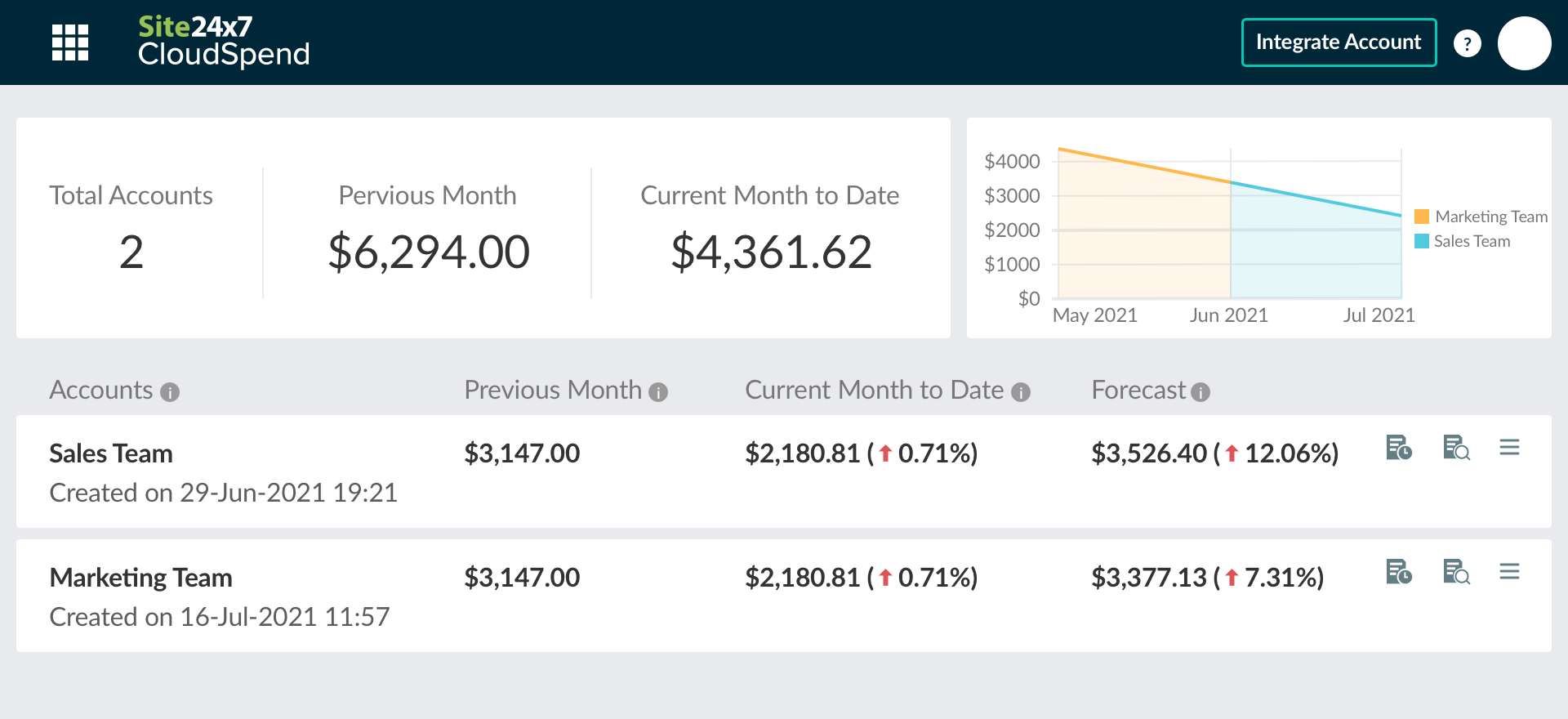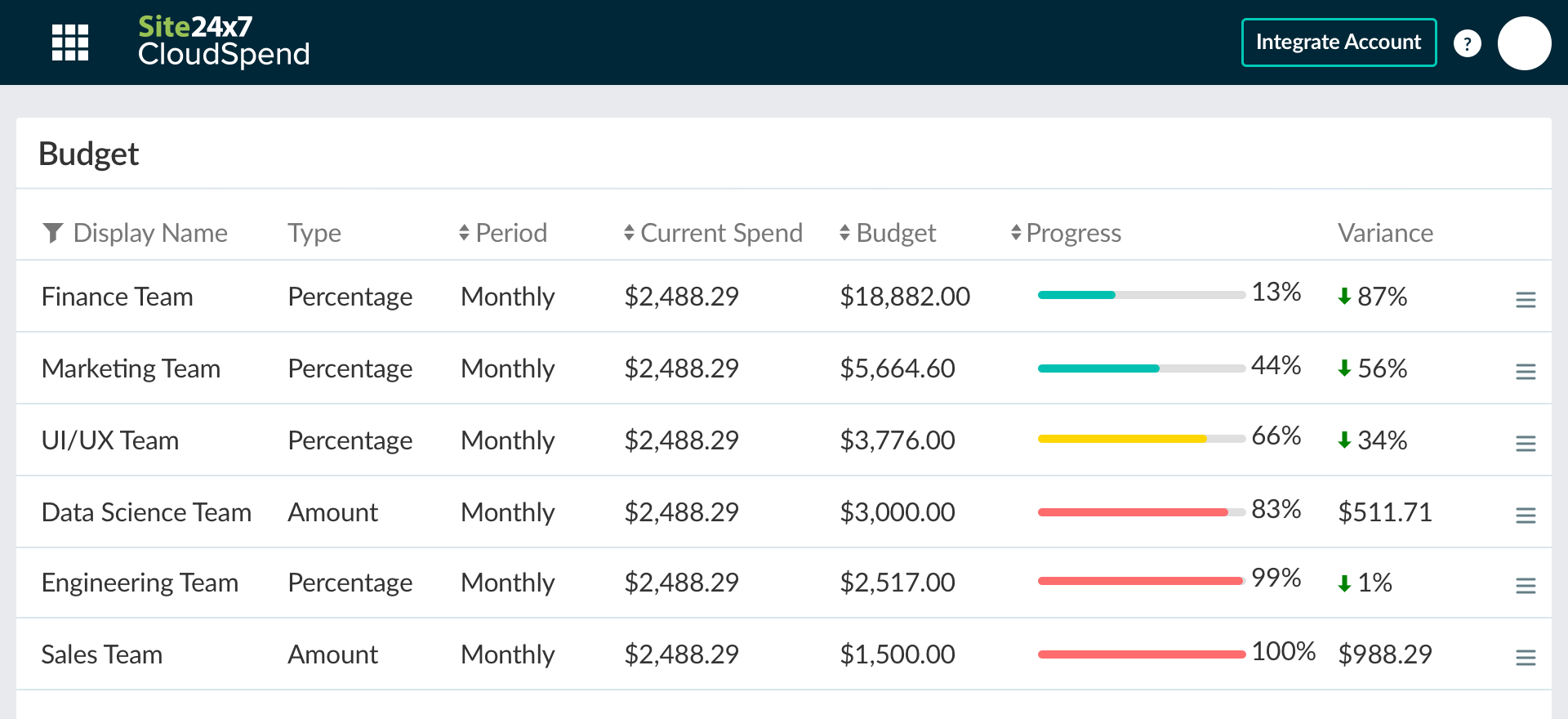Why is AWS cost budgeting and forecasting important?
Cloud computing has shifted tech spending from fixed capital expenditure (CapEx) to a fluid operational expenditure (OpEx); instances can now be started with just a click, making cloud billing increasingly complex. Managing your cloud costs with the FinOps model can help implement good budgeting in the cloud and plan your AWS costs for the year. Building a roadmap to reduce cloud sprawl, optimize AWS costs, budget cloud costs, and forecast spending is vital. It facilitates a seamless journey through AWS billing and cost management.With budgets and forecasts for your cloud, you can:
- Avoid surprises in AWS bills by rightsizing resources.
- Track costs for and allocate budgets to various accounts and business units (BUs)
- Obtain monthly estimated total bill amounts for chargeback entities of a BU.
- Leverage forecasted data to gain a realistic prediction of cloud spending, and allocate budgets.
- Understand the factors that caused monthly expenses to go over budget.
- Receive real-time notifications for exceeded budget thresholds.
Budgets and forecasts for your AWS cost optimization journey
Use automated budget alerts
Notify your finance and engineering teams by setting budget alerts based on actual spending. Recurring budget alerts run monthly, quarterly, yearly, month-to-date, or year-to-date so you can be alerted when costs are projected to surpass the set budget. This real-time alerting helps avoid any overspending.
Allocate chargebacks easily
Identify departments that exceed the budget and track the factors that caused the overspending by maintaining responsible accounting and allocating chargebacks. Forecasting for BUs provides an estimated total bill amount monthly for the chargebacks to check if spending is in line with expectations.
Obtain real-time forecasts
Forecasted AWS costs help you take corrective actions, like rightsizing of resources, in real time that may have otherwise waited until the end of the quarter. Make optimal purchasing decisions and optimize your AWS budgets by viewing real-time forecasted data.
Visualize with intuitive dashboards
The Budgets dashboard lets you configure, edit, or suspend budgets all from a single console. It also offers insights into your current spending vs. the set budget and the difference between them. Plus, you can schedule your cost reports to be delivered to your inbox at a frequency you choose.
Maximize your budget
Empower each department to maximize their budgets. The historical spending data of a department gives you an idea if the expenses will meet the budget goals or exceed them. You can also use the surplus budgets at the end of the year to prepay next year's computational needs, either through AWS' Reserved Instances or Savings Plan.
Budget for linked accounts
Link a budget to a linked account, tagged resource, or an already created BU, according to your preference. AWS budgets for linked accounts facilitate microscopic visibility into the spending and analyze the costs accrued in the cloud.
Predict your cloud spend and stay on budget

Prevent bill surprises
Predict how much money will be spent on the cloud in a year and stay within budget accurately. Advanced historical spending patterns help you plan your expenses, keeping your costs under control and preventing any AWS billing surprises.

Monitor budgets proactively
Track your AWS spending at regular intervals and compare it with the allocated budget to identify any discrepancies. Plus, view the rise or drop in budget values (in percentage or amount in dollars), and if there are any anomalies, devise a counter plan quickly.